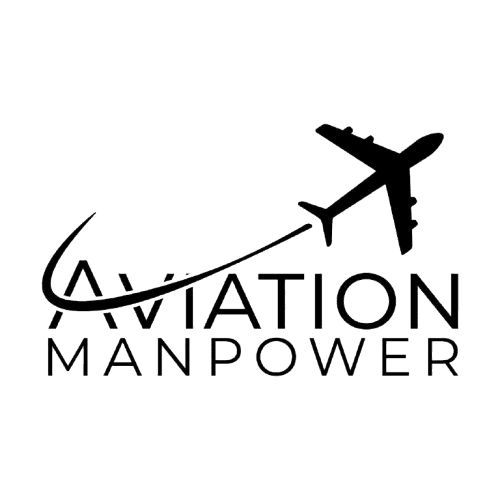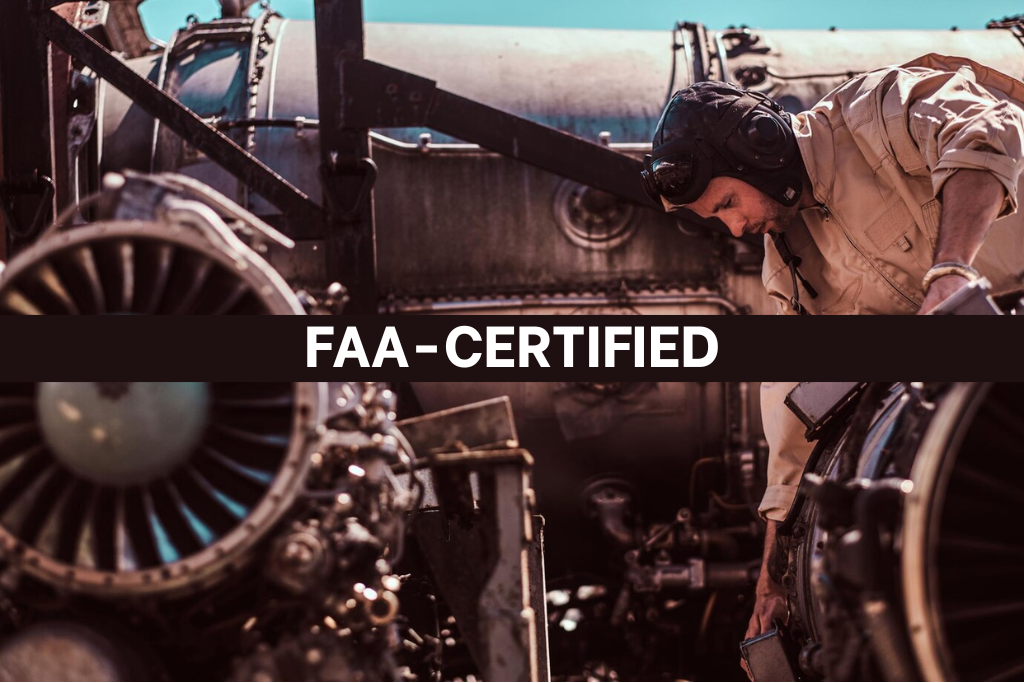Introduction
If you’ve ever looked up at an airplane soaring through the sky and wondered what it takes to keep it flying safely, a career as an FAA-certified aircraft mechanic might be the perfect fit for you.
Aircraft mechanics are the unsung heroes of the aviation industry, ensuring that every plane is in top condition and ready for takeoff. From inspecting engines to troubleshooting electrical systems, these skilled professionals play a critical role in keeping the skies safe.
But how do you become an FAA-certified aircraft mechanic? What steps do you need to take, and what skills are required? In this comprehensive guide, we’ll walk you through everything you need to know about pursuing this rewarding career.
Whether you’re a recent high school graduate, a career changer, or an aviation enthusiast, this blog will provide you with the tools and knowledge to get started.
What Does an FAA-Certified Aircraft Mechanic Do?
Before diving into the steps to become an aircraft mechanic, it’s important to understand what the job entails. FAA-certified aircraft mechanics, also known as Airframe and Powerplant (A&P) technicians, are responsible for:
- Inspecting Aircraft
Conducting routine inspections to ensure aircraft are safe and operational. - Performing Maintenance and Repairs
Fixing or replacing faulty parts, from engines to landing gear. - Troubleshooting Issues
Diagnosing problems using technical manuals, diagnostic tools, and expertise. - Testing Systems
Ensuring that all systems, including electrical, hydraulic, and fuel systems, are functioning properly. - Keeping Records
Documenting all maintenance and repairs to comply with FAA regulations.
Aircraft mechanics work in a variety of settings, including airports, repair stations, and manufacturing facilities. The job requires a mix of technical knowledge, problem-solving skills, and attention to detail.
Why Become an FAA-Certified Aircraft Mechanic?
- High Demand for Skilled Mechanics
The aviation industry is experiencing a growing demand for certified mechanics due to increased air travel and an aging workforce. - Competitive Salary
According to the Bureau of Labor Statistics, the median annual wage for aircraft mechanics was $67,000 in 2022, with experienced professionals earning even more. - Job Stability
Aircraft mechanics are essential to the aviation industry, making this a stable and recession-resistant career. - Opportunities for Advancement
With experience and additional certifications, mechanics can move into supervisory roles, specialize in specific aircraft, or even transition into related fields like aerospace engineering. - Hands-On Work
If you enjoy working with your hands and solving technical problems, this career offers a satisfying mix of physical and mental challenges.
Steps to Become an FAA-Certified Aircraft Mechanic
Becoming an FAA-certified aircraft mechanic requires a combination of education, training, and certification. Here’s a step-by-step guide to help you navigate the process:
1. Meet the Basic Requirements
- Be at least 18 years old.
- Be fluent in English (reading, writing, and speaking).
- Have a high school diploma or equivalent.
2. Choose Your Path: Education or Experience
There are two main paths to becoming an FAA-certified aircraft mechanic:
Option 1: Attend an FAA-Approved Aviation Maintenance Technician School (AMTS)
- Enroll in a program that offers training in airframe, powerplant, or both (A&P).
- Programs typically take 18-24 months to complete.
- Coursework covers topics like aircraft systems, engines, avionics, and FAA regulations.
Option 2: Gain On-the-Job Experience
- Work under the supervision of an FAA-certified mechanic for at least 30 months for both airframe and powerplant ratings, or 18 months for one rating.
- Document your experience and tasks to meet FAA requirements.
3. Prepare for the FAA Exams
To earn your A&P certification, you’ll need to pass three exams:
- Written Exam: Covers general knowledge, airframe, and powerplant topics.
- Oral Exam: Tests your understanding of aircraft systems and procedures.
- Practical Exam: Demonstrates your ability to perform maintenance tasks.
Study materials and practice tests are available to help you prepare.
4. Apply for Your FAA Certification
- Submit your application to the FAA along with proof of education or experience.
- Once approved, schedule and pass your exams.
5. Earn Your A&P Certificate
After passing all three exams, you’ll receive your FAA Airframe and/or Powerplant certificate, making you a certified aircraft mechanic.
Skills and Qualities of a Successful Aircraft Mechanic
To thrive in this career, you’ll need more than just technical knowledge. Here are some key skills and qualities:
- Attention to Detail
Aircraft mechanics must follow strict guidelines and ensure every component is in perfect condition. - Problem-Solving Skills
Diagnosing and fixing issues requires creativity and critical thinking. - Manual Dexterity
Working with tools and small parts demands precision and coordination. - Technical Knowledge
A strong understanding of aircraft systems, mechanics, and electronics is essential. - Communication Skills
Mechanics often work in teams and must communicate effectively with colleagues and supervisors. - Physical Stamina
The job can be physically demanding, requiring long hours on your feet and lifting heavy equipment.
Career Opportunities for FAA-Certified Aircraft Mechanics
Once you’re certified, a wide range of career opportunities await:
- Airlines
Work for commercial airlines, maintaining passenger and cargo aircraft. - Repair Stations
Specialize in repairing and overhauling aircraft components. - General Aviation
Maintain private planes, helicopters, and other small aircraft. - Manufacturing
Work for aircraft manufacturers, assembling and testing new planes. - Government and Military
Maintain aircraft for government agencies or the military. - Specialized Roles
Focus on areas like avionics, engines, or composite materials.
Tips for Success in Your Aircraft Mechanic Career
- Stay Updated with Technology
The aviation industry is constantly evolving, so continuous learning is key. Attend workshops, earn additional certifications, and stay informed about new technologies. - Network with Industry Professionals
Join professional organizations like the Aircraft Mechanics Fraternal Association (AMFA) or the Professional Aviation Maintenance Association (PAMA) to connect with others in the field. - Consider Specializing
Specializing in a specific type of aircraft or system can make you more competitive in the job market. - Work with Aviation Recruiters
Aviation recruitment agencies can help you find job openings, prepare for interviews, and advance your career. - Maintain a Strong Work Ethic
Reliability, punctuality, and a commitment to safety are essential traits for success in this field.
Conclusion
Becoming an FAA-certified aircraft mechanic is a challenging but rewarding journey. It requires dedication, technical expertise, and a passion for aviation. By following the steps outlined in this guide, you can earn your certification and embark on a career that offers stability, competitive pay, and the satisfaction of knowing you’re keeping the skies safe.
Whether you choose to attend an aviation maintenance school or gain experience on the job, the key is to stay focused and committed. The aviation industry needs skilled mechanics now more than ever, so there’s no better time to start your journey. Take the first step today, and soon you could be working on the aircraft that connects the world.
FAQs
1. What are the basic requirements to become an FAA-certified aircraft mechanic?
To become an FAA-certified aircraft mechanic, you must:
- Be at least 18 years old.
- Be fluent in English (reading, writing, and speaking).
- Have a high school diploma or equivalent.
- Complete FAA-approved training or gain relevant work experience.
2. How long does it take to complete FAA-approved training?
FAA-approved Aviation Maintenance Technician School (AMTS) programs typically take 18-24 months to complete. These programs cover both airframe and powerplant (A&P) training, preparing you for the FAA exams.
3. What is the difference between airframe and powerplant certifications?
- Airframe Certification: Focuses on the aircraft’s structure, including wings, fuselage, landing gear, and electrical systems.
- Powerplant Certification: Covers engines, propellers, and other propulsion systems.
Many mechanics earn both certifications (A&P) to increase their job opportunities and versatility.
4. How much does it cost to become an FAA-certified aircraft mechanic?
The cost varies depending on the program, but FAA-approved schools typically charge 15,000 to 50,000 for tuition and fees. Some schools offer financial aid, scholarships, or payment plans to help offset costs.
5. What is the job outlook for FAA-certified aircraft mechanics?
The job outlook is strong, with a 5% growth rate projected from 2021 to 2031. The demand for skilled mechanics is driven by increased air travel, an aging workforce, and the need for regular aircraft maintenance and inspections.

